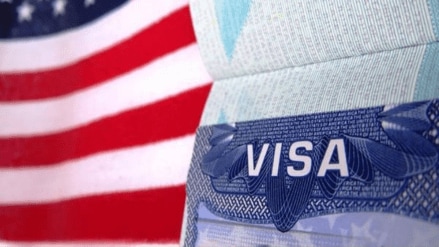B1/B2 news: A 30-year-old woman from India, who recently secured her B1/B2 visa to the United States, has shared a comprehensive account of her journey on Reddit. Married, with no children, and employed in the tech industry with a take-home salary of ₹2 lakh per month, her story offers key insights and do’s and don’ts for future visa aspirants.
Smooth Biometrics at Delhi VAC
Her biometrics appointment took place at the Delhi VAC (Visa Application Center) located near Shivaji Stadium Metro Station. She advised applicants to steer clear of middlemen outside the center, especially those applying for B1/B2 visas. Entry is allowed an hour before the scheduled appointment time, and solo travelers can use lockers for ₹500 to store phones and bags.
The biometric process, managed by Indian staff, was straightforward: photograph and fingerprinting of all 10 fingers. She emphasized ensuring that a barcode sticker is affixed to your passport before exiting. Required documents included the current passport, appointment confirmation with a visible barcode, and DS-160 confirmation.
Visa Interview at Mumbai Consulate
The second part of her journey was at the U.S. Consulate in Bandra Kurla Complex (BKC), Mumbai. Arriving an hour early, she was allowed inside without any issue. Interestingly, only the barcode sticker on the passport was checked; neither the appointment confirmation nor DS-160 were requested by the consular officer (CO).
During the interview, the CO asked about the purpose of her trip, her profession, and her travel history. She explained they were visiting her husband’s uncle in Texas over Christmas. She also clarified that her husband had already received his visa four years ago. Her profession as a Senior Data Analyst at an e-commerce firm seemed to strengthen her case. Upon hearing her crisp, specific responses, the officer granted her visa.
Tips for a Successful Experience
She noted that clear, confident answers were more important than fancy attire or wealth. For instance, she observed a well-dressed family being denied due to vague answers, while a nervous applicant who spoke about a business trip in detail was approved. She also suggested applicants stand directly under the overhead speaker and avoid leaning on the counter, as clarity of speech matters.
Additionally, she warned applicants not to break rules or disobey instructions from staff. One student visa applicant, who tried to jump the queue, was reportedly sent to a CO who was rejecting most applications—likely due to the staff’s irritation.
From biometric basics to consulate etiquette, this firsthand account is a helpful guide for anyone preparing for a U.S. tourist visa interview.
